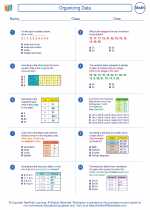Uniqueness in Mathematics
In mathematics, the concept of uniqueness is used to describe a situation where there is only one possible solution or outcome for a given problem or equation. This concept is important in various areas of mathematics, including algebra, geometry, and calculus.
Uniqueness in Equations
When solving equations, it is important to determine whether the solution is unique or if there are multiple possible solutions. For example, in linear equations of the form y = mx + b, the slope-intercept form, the values of m and b uniquely determine the line. There is only one line that passes through a given point with a given slope.
Uniqueness in Geometry
In geometry, the concept of uniqueness is used to describe the properties of shapes and figures. For example, the angles of a triangle are uniquely determined by the lengths of its sides, according to the law of cosines and the law of sines. This means that given the lengths of the sides of a triangle, there is only one possible set of angles that can satisfy the triangle's properties.
Uniqueness in Calculus
In calculus, the concept of uniqueness is important in the context of limits, derivatives, and integrals. For example, the derivative of a function at a specific point is unique, meaning that there is only one slope that the function can have at that point. Similarly, the integral of a function over a given interval has a unique value, determined by the area under the curve.
Study Guide
To understand and apply the concept of uniqueness in mathematics, consider the following study guide:
- Review the properties of linear equations and how the coefficients uniquely determine the line.
- Practice solving equations to determine if they have unique solutions or multiple solutions.
- Explore the uniqueness of geometric figures, such as triangles, and how their properties are uniquely determined by certain parameters.
- Study the concept of limits and derivatives in calculus, and how they represent unique mathematical properties of functions.
- Work on problems and examples that involve uniqueness in various mathematical contexts to reinforce understanding.
By mastering the concept of uniqueness, you will develop a deeper understanding of mathematical concepts and be better equipped to solve problems across different areas of mathematics.
[Uniqueness] Related Worksheets and Study Guides:
.◂Math Worksheets and Study Guides Seventh Grade. Organizing Data

 Worksheet/Answer key
Worksheet/Answer key
 Worksheet/Answer key
Worksheet/Answer key
 Worksheet/Answer key
Worksheet/Answer key
